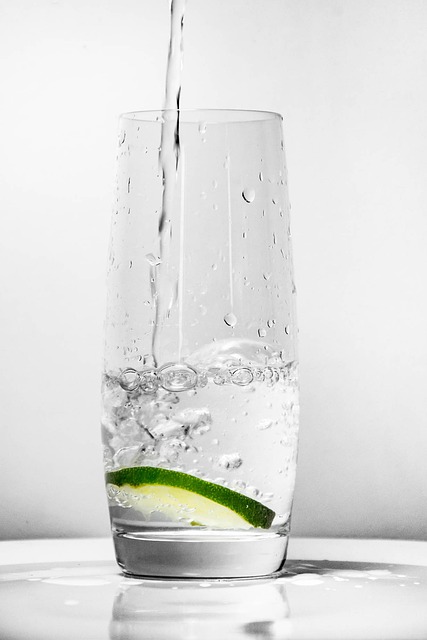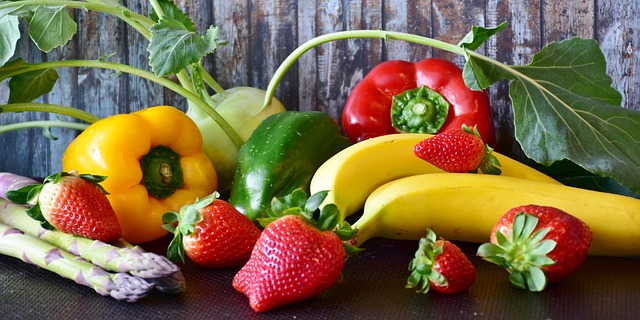The acid reflux diet focuses on limiting and, eventually, eradicating acid reflux symptoms by identifying trigger foods through an elimination phase. High-cholesterol and high-fat foods, acidic and spicy foods, dairy, coffee, chocolate, and citrus fruits are all trigger foods for many people. Nonetheless, everyone reacts differently to different foods.
Once you’ve identified your triggers, you can actively avoid them by substituting healthy alternatives that don’t cause symptoms. Many acid reflux sufferers find relief by eating plenty of veggies and non-citrus fruits, nutritious grains, and lean proteins. We hope you find success with the advice in this article.
Your Calorie and Nutrition Objectives
Most nutrition facts labels utilize 2,000 calories as an estimate of the overall population’s calorie needs. They also base the proportion of the RDA for specific nutrients on a 2,000-calorie diet. While 2,000 calories is an excellent starting point, everyone’s calorie requirements vary depending on a number of factors, including:
- Age
- The biological sex
- Height
- Weight
- Body structure
- Activation level
- Medical problems
The acid reflux diet does not need you to limit your caloric intake; instead, you will focus on avoiding trigger foods and substituting them with healthy alternatives. Use one of those online calorie calculators to figure out what your daily calorie intake should be.
Tips for Staying Hydrated
When it comes to water consumption, the ancient adage is “eight glasses a day.” Just how huge are those spectacles? Is it better to have ice or not? There are so many questions.

The truth is that there is no common optimum number of ounces you should drink per day, just as there is no universal ideal number of calories everyone should consume daily. The total amount of fluid consumption a person needs to is determined by a number of parameters, including body weight, activity level, and sweat rate, to mention a few.
When it comes to beverage options, plain water is usually the best choice for hydration, but it may grow dull. You may prefer coffee, soda, or juice instead, but the carbonation, caffeine, and acidity may cause reflux problems. You should avoid these beverages if they offend you.
If you’re having difficulties staying hydrated, try adding berries, sliced cucumbers, or powdered flavorings to your water. Hot teas are another fantastic method to drink more water, but avoid lemon and mint kinds if you’re on an acid reflux diet.
Staples from the grocery store
Veggies, vegetables, and more vegetables. While attempting to reduce acid reflux symptoms, the foundation of your diet will be produced with moderate servings of lean proteins, non-citrus fruits, and whole grains. You’ll avoid greasy, spicy, and acidic foods.
Vegetables: Increase your intake of leafy greens, root vegetables (sweet potatoes, beets, carrots, and so on), and cruciferous veggies (broccoli, cauliflower).
Fruits: Bananas, pears, apples, coconut, plums, honeydew melon, and apricots
Grains: Whole grains such as quinoa, bulgur, amaranth, and rolled oats are good choices.
Protein: Adhere to skinless lean proteins like skinless chicken breasts and 90% lean ground turkey. Fish, tofu, lentils, and pork may also appeal to you.
If you’re worried about your acid reflux diet meals being bland, experiment with different herbs and spices.
Try these tasty alternatives to cayenne and red pepper that will not irritate your stomach:
- Basil
- Cilantro
- Rosemary
- Thyme
- Oregano
You probably already have some compliant and non-compliant foods in your pantry. If you’re unsure whether an item is compliant, look for non-compliant components and nutrition statistics on the label. It’s probably not compliant if it has a lot of fat, sodium, or caffeine. Compliant foods will be minimally processed and free of non-compliant ingredients.
Additional suggestions:
Look through the Frozen Section. Frozen fruits and veggies are exactly as nutritious as fresh and last longer. Fresh produce is frequently more expensive than frozen produce.
Purchase Grains in Quantity. You can save money by buying slow-perishing foods in bulk, such as rice, oats, and other grains.
Get meat on sale and freeze it. It’s exciting to get a good discount on proteins! If your grocery shop has a two-for-one promotion, stock up and freeze anything you won’t use in the next few days.
Recipe Suggestions
You may feel overwhelmed or anxious about recipe ideas when starting a new diet. That shouldn’t be the case on the acid reflux diet, as you’re allowed to eat a variety of satisfying and nutritious meals. Try these breakfast, lunch, supper, and snack dish ideas.
Breakfast
- Breakfast tacos with roasted root vegetables
- Two slices of whole-wheat bread with apricot preserves
- Wild blueberry pancakes made with whole grains
- Warm rolled oats with cinnamon, berries, and slices of banana
- Ginger-honey almond butter on sweet potato toast with kiwi slices
- Shake with powdered peanut butter and banana
Dinner and Lunch
- Lasagna made without tomato sauce
- Chicken parmesan with low fat
- Kabobs of grilled vegetables
- Chicken roll-ups packed with quinoa
- Salad of spinach, sliced apples, and pumpkin seeds
Snacks
- Banana with cinnamon with nut butter
- Homemade low-fat french fries
- Oven-dried round Persimmons
- Steamed edamame
Dessert
- Custard, pudding, frozen yogurt, or ice cream with low or no fat.
- Banana-flavored “ice cream.”
- Boat with papaya yogurt and walnuts
- Angel food cupcakes that are light and fluffy.
- Cookies with a low-fat content
Pros
In terms of diets, the acid reflux diet is quite well-rounded, especially given that it is tailored to a specific group. From nutrition to cost to sustainability, the acid reflux diet demonstrates that it is a generally healthy and safe diet for the majority of people.
Overall nutrition
You shouldn’t feel deprived by the acid reflux diet because you’ll be able to eat a variety of things to keep you full and avoid boredom. The acid reflux diet has no obvious nutrient shortages and includes all of the food groups suggested by the US Dietary Guidelines.
Practicality and sustainability
Because this diet allows you to eat a range of foods, it should be easy to stick to in the long run. The initial elimination phase is just temporary, and even then, you won’t be missing out on eating out with your family and friends—as long as you make sensible choices, this diet won’t prevent you from dining out, office potlucks, family reunions, or other social events.
Once you’ve identified your triggers, you’ll most likely be inclined to avoid them in order to avoid symptoms.

Who Is the Diet For?
The acid reflux diet is intended for a specific population: those who suffer from acid reflux. As a result, it’s probably the most effective option for addressing that specific situation. Taking out non-compliant foods, such as spicy meals and caffeine, from your diet may help lessen or eliminate the unpleasant side effects of acid reflux.
Cutting back on high-fat meals and avoiding excessive quantities, both of which are advocated on the acid reflux diet, can result in weight loss. While the acid reflux diet is not “designed” for weight loss, sticking to it can result in weight loss. Losing weight is one of the best strategies to lessen reflux symptoms in persons who are overweight.
General Health and Energy
After a while on the acid reflux diet, you should notice that you feel better in general. You may feel more enthusiastic, driven, and productive; you may sleep better and be in a better mood overall; and you may even feel physically stronger. This is because you’ll have begun fuelling your body with nutrient-dense foods that optimize all of your body’s physiological functions and aid in hormone regulation.
Cost
This diet is not prohibitively expensive: You may cook a variety of meals on the acid reflux diet with basic supplies from any grocery shop. In reality, the acid reflux diet may assist you in saving money. If you eat a lot of fast food or take-out, you’ll need to find healthier options on the acid reflux diet, but skipping the drive-thru a few nights a week may save you some money.
You can save money on food by buying frozen fruits and vegetables or sticking to those that are in season and on sale.
Cons
Overall, the acid reflux diet is appropriate for the majority of people, particularly those who suffer from acid reflux and want to reduce their symptoms. Unfortunately, all diets have downsides, including the acid reflux diet. Before beginning the acid reflux diet, consider the following disadvantages.
Dietary Guidelines
As previously stated, the acid reflux diet is not meant to be restricted, but there are always hazards associated with any elimination-style diet. You’ll need to avoid foods that can aggravate reflux symptoms, at least temporarily, so working with an expert can be beneficial.
A doctor or certified dietitian can help you maintain dietary balance and enjoyment while avoiding feelings of deprivation.
Practicality and sustainability
Likewise, the acid reflux diet allows you to eat a wide variety of foods, making it simple to follow in the long run. Nonetheless, you may find yourself missing some of your favorite foods at first.
For example, if you eat pizza many times per week and take it out for the acid reflux diet because it’s heavy in fat and contains tomato sauce, you could be disappointed when you can’t eat it at a ball game, party, or another event.
Who Is the Diet For?
As previously said, the acid reflux diet is intended for a certain group. While it is generally balanced and safe for everyone, if you have other goals, this diet may not be for you.
For example, the acid reflux diet isn’t generally designed to assist individuals in losing weight, so if weight loss is your primary aim, you should try another diet.
General Health and Energy
You’ll probably feel better than ever once you’ve gotten adjusted to your new eating pattern on the acid reflux diet. Yet, you may find yourself grumpy and agitated at first. Cravings are unavoidable when you abruptly eliminate foods from your diet, especially if you spend a lot of time and energy thinking about the things you can’t have. But, the reward will outweigh the cost, and your desires will fade after a few occasions. Focus on the things you can eat rather than the ones you should avoid.
Cost
Overall, the acid reflux diet is not expensive, although some of the recommended foods are. The diet, for example, emphasizes lean cuts of meat, which are frequently more expensive than their higher-fat counterparts. You’ll also need to buy a lot of fruits and vegetables, which may seem expensive if you’re used to purchasing low-cost processed foods like sugary cereal or chips and salsa.

Menu Planning and Cooking
Fortunately, no special equipment or sophisticated tools are required to prepare tasty, nutritious meals on the acid reflux diet. These few pointers will get you a long way:
Food Planning and Preparation
If you go to the grocery shop with a plan, you can save a lot of time, effort, and money. Before you go shopping, pick what you want to eat for the week, prepare a list, and stick to it.
It’s time to prepare now that you’ve planned your menu and purchased your ingredients. The acid reflux diet emphasizes foods that can be prepared in advance and reheated on the stove or in the microwave, eliminating the need to worry about meals taking up a lot of your time. The majority of veggies, whole grains, and proteins will keep in the fridge for 3 – 5 days.
Make Do With What You Have
If you think you’re running out of ingredients, you might not be. Because the acid reflux diet isn’t inherently limiting, you should be able to prepare a good meal even if your cupboard is running low. Choose simple dishes such as Italian-seasoned rice or rolled oats with mashed bananas.
To Conclude
Selecting a diet is a huge personal decision that demands a lot of thought about your health goals. The acid reflux diet focuses on relieving symptoms of a specific health issue and may not be appropriate for persons who do not suffer acid reflux. Yet, it is a healthy and balanced diet in general and poses no risks to the general population.
If you do experience acid reflux, this diet may assist and may lead to some secondary benefits, like weight loss and healthy long-term eating habits. However, evidence suggests that restricting these foods may not always be effective and that trigger foods differ from person to person.
Engaging with a trained dietitian can assist you in identifying trigger foods and developing a tailored meal plan that suits your specific requirements.

